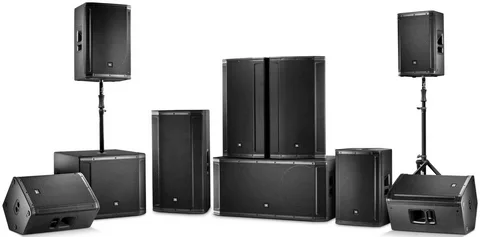A venue sets mood long before anyone looks up at the lights. People step through the door, hear a gentle swell, and feel guided without knowing why. Sound carries shape, speed, and warmth. When planned with care, it turns empty space into a welcoming place.
Designers start with purpose. A bar asks for energy that lifts conversation without drowning it. A gallery needs quiet detail that does not distract from the art. A stadium needs clear speech that cuts through crowd noise. Each goal suggests different coverage, levels, and tone. Placement comes next. Ceiling units paint wide areas; wall mounts steer focus; compact subs add body without boom. The layout sketches a map of movement, nudging guests toward the bar, across the floor, or into calmer corners.
Commercial audio speakers now act less like furniture and more like instruments. They shape beams, narrow spill, and hold consistent tone at different volumes. Paired with digital processing, they let teams tune a room in layers. Equalisers fix tough frequencies. Limiters stop harsh peaks. Delays align distant zones so claps do not echo like thunder. The result feels even, almost effortless, as if the building itself learned to sing at a sensible level.
Music choice matters as much as hardware. A fast lunch runs on crisp rhythms and short tracks. Late evening leans into warmer textures with longer tails. Curators set tempo bands for each hour, then test transitions between them. Volume curves shift gently at door time, happy hour, and close. Staff gain simple controls, but the system guards the ceiling to protect ears and licences.
The psychology behind all this remains simple. People adjust speech to the room. If the system blares, voices rise and fatigue follows. If the sound bed sits just above the noise floor, chatter softens and the space feels friendly. Designers measure average levels across the day and set targets for each zone. Toilets want less bass. Queues want brighter presence to reduce stress. Entrances need a quick cue that says you have arrived.
Many teams add local scenes. A tasting room plays softer textures and brings the midrange forward so people hear notes and descriptions. A shop window pushes a narrow beam to the pavement without spilling into neighbouring flats. Sports lounges keep commentary clear at tables while leaving open aisles relaxed. These choices rely on careful zoning and smart routing rather than raw power.
Microphones, sensors, and simple analytics help keep the plan steady. When the door opens, external noise enters and the room balance shifts. The system listens, trims a few decibels, and restores the feel. At capacity, bass often builds near walls; a processor sees the change and dials back a narrow band. Staff do not need to chase sliders. They watch service while the rig handles the drift.
Compliance and care belong in the plan. Venues record average sound levels to meet local rules and show good faith to neighbours. Accessibility gets attention too. Clear voice announcements, gentle alarms, and hearing assistance loops improve safety and comfort. Good sound should include everyone, not only those seated near a speaker.
Maintenance protects the mood. Teams schedule quiet tests before opening, check cables, and run a short reference track to catch faults. Firmware updates arrive off peak. If a unit fails, the matrix reroutes coverage to hide the gap until a technician swaps hardware. Guests never notice the repair; they remember the atmosphere.
When a venue sounds right, time seems to slow. People linger, buy another drink, read one more label, or wait for an encore. If someone asks how the room feels alive without racks of visible gear, the answer might be simple. With commercial audio speakers used wisely, architecture and music meet in the middle. If a manager wonders whether the same result needs a forest of boxes, the honest reply is no, because the plan does the heavy lifting.
